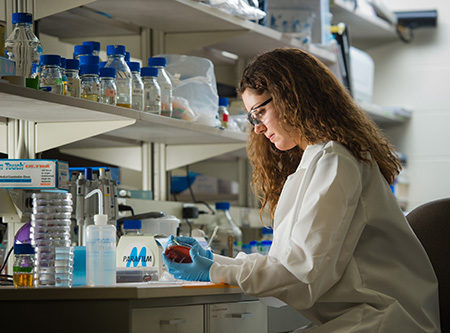Originally from India, Ayurveda, or Ayurvedic medicine, is a comprehensive and coherent medical system, as is Western medicine or traditional Chinese medicine. For Example, it is considered the oldest medical system in human history. Indian tradition traces its beginnings to 5,000 years or even 10,000 years. However, the writings on which Ayurvedic medical knowledge based today are less ancient. The Caraca Samhita was written around 1,500 BC, while the Sushrut Samhita and the Ashtang Hrdyam date from the beginning of the Christian era (between 300 and 500 AD). These three texts describe the basic principles of Ayurvedic medicine as it is still practiced in India today.
Although little known in the West, Ayurveda is beginning to attract public interest and its practitioners are in the process of carving out a place among health professionals. The resolutely holistic approach to Ayurvedic medicine probably counts for many in this new infatuation. It is the patient who is cared for, not his illness. Thus, three people with the “same” migraine are treated in very different ways.
Ayurveda: New Approaches
The Ayurvedic practitioner seeks to heal the person by helping him to regain lost balance, which, according to Ayurveda, is the true cause of the disease. We start from the principle that a being in harmony with his environment, and whose way of life balanced, will be naturally happy and healthy. It is when this balance is broken that the disease appears. The practitioner uses a variety of techniques to understand the nature of the person, find the particular imbalances that cause his illness, and help him regain his natural state of happiness and health.
In Sanskrit, the oldest known structured language, Ayur means “life” and Veda, “knowledge”. Ayurveda is, therefore, a science of life, just like biology, which has borrowed in Greek the words bios, “life” and logos, “knowledge”. The Rishis, the enlightened masters who traditionally attribute to the Vedas (the writings that are at the origin of the Hindu religion and Ayurveda), were first and foremost philosophers. These, like the philosophers of ancient Greece, regarded themselves as Gnostics. They believed that it is possible to meet a state in which one can apprehend, with one’s conscience, the totality of the Universe. This state would allow the body to harmonize with the “Ultimate Being”, which would be the safest way to happiness and health.

Diagnoses in Ayurvedic medicine
For Ayurvedic medicine, the disease results from an imbalance between the doshas. Excess or deficiency of one or the other will cause a metabolic disturbance. Ultimately, the disease will appear. In muscle tissue, for example, an excess of Vata will cause the emaciation of the muscle, a surplus of Pitta will cause infection, while too much of Kapha will cause it to swell. The causes of the disease are, therefore, found in the way of life, habits, and environment of the person. To explore the causes and various aspects of the disease, the practitioner will first take the pulse of the person.
Ayurvedic medicine has pushed this practice to an impressive degree of precision and efficiency, which goes far beyond the number of pulses per minute. It will also check the physical characteristics of the patient, the nature of the skin, hair, appetite, condition of eyes, nails, tongue, urine, and stool.

Ayurveda: More Studies Unveiled
A careful study of all these signs will tell the physician of the nature of the problem that affects the person. An experienced practitioner may even perceive the signs of an imbalance that may cause illness before it manifests itself. It can then help the person correct the imbalance, preventing the onset of the disease. This preventive aspect is also crucial in Ayurveda. It attempts to awaken the innate intelligence of the body and the mind, to restore to them their natural faculty to prevent the disease, and to keep up joy and serenity.
A situation is created where the disease has no control, to strengthen the body’s natural defenses, and to stimulate the processes of elimination of toxins and impurities to keep health. The treatises of Ayurvedic medicine testify to an astonishing and profound knowledge of the biological, physiological, and metabolic processes. Thus, we find in writings dating back to our era the description of a disease that results from poor nutrition and sedentarism, and which manifested by the accumulation of a fatty substance on the walls of the blood vessels. This is undoubtedly the oldest description of hypercholesterolemia, its causes, the consequences it entails, and the means to take to avoid it.

Treatment Strategies in Ayurvedic Medicine
To restore lost balance, the Ayurvedic practitioner has a host of techniques to transform the body and mind. He or she can develop a diet adapted to the specific needs of the person, prescribe herbal or aromatherapy preparations, detox treatments, massages, yoga exercises, meditation sessions, in short, a program designed to Change the person’s lifestyle. The doctor is often seen as a kind of counselor who guides the patient on the path of his recovery. There is even in India a Vedic surgery.
Dietetics occupies a privileged place in Ayurvedic medicine. Each food and medicinal plant is constituted, in variable proportion, of the same elements which form the body and the psyche. The properties, thus, conferred on foods and plants by the elements that compose them, are used to help the person to rebalance his doshas. For example, green vegetables, raw vegetables, pulses, and beef stimulate Vata, while dairy products, nuts, chicken, fish, and seafood calm it.

Ayurveda: The Choice is Up to You
The choice, combination, and preparation of foods are part of the therapeutic program developed by the practitioner. Several plants of the Ayurvedic pharmacopeia have been the subject of scientific studies in India and the West. To realize this, it is enough to consult some of our files that deal with plants commonly used in Ayurveda, such as gum, turmeric (see turmeric (psn)), fenugreek, Boswellia, and gymnastics. These plants have proven to be effective in treating conditions as diverse as arthritis, hypercholesterolemia, skin diseases, cough, immune system deficiencies, and so on.
However, the Ayurvedic practitioner rarely makes use of only one of these plants at a time. It will instead use complex mixtures, called Rasayana, whose overall effect would be synergistic.
Ayurveda: Last Trials
Researchers at the University of Ohio School of Medicine in the United States have studied one of the best-known Rasayana, Amrit Kalash, for pharmacological activity. In vitro and other animal experiments demonstrated that the preparation increased lymphocyte production in the presence of a pathogen or cancer, inhibited platelet aggregation, and possessed powerful antioxidant properties.
According to Dr. Hari Sharma, who presided over all these trials, “it is fascinating to see that modern scientific research demonstrates that this preparation has the effect of strengthening the field, the immune system and the mechanisms of homeostasis, as it is Written in the ancient texts of Ayurveda”. “it is fascinating to see that modern scientific research demonstrates that this preparation has the effect of strengthening the field, the immune system and the mechanisms of homeostasis, as it is written in the ancient texts of Ayurveda”.
In the West, the use of these remedies is more a matter of our allopathic pharmacological approach than of the Ayurvedic holistic approach. But interest in Ayurvedic pharmacopeia is growing. Dr. Vladimir Badmaev, Scientific and Medical Director of the Sabinsa Group, a supplier of Ayurvedic plants, believes that “the knowledge accumulated by Ayurveda practitioners over time can help modern medical science discover new and safe medicines”.


